#remotely operated vehicle (ROV)
Text
SCREAMINHG AND SHOUTING AND BANGING MY POTS AND PANS FROM THE ROOF TOPS LOOK AT THIS GAME!!!
#ITS SO COOL#HOLY SHIT#ROV#remote operated vehicle#marine life#marine#marine biology#nautilus live#marine biology shitpost#video games#steam#indie games
83 notes
·
View notes
Text
Pass the phone at sea edition
Meet our crew aboard MBARI's research vessel Rachel Carson as we explore the deep sea with the Monterey Bay Aquarium.
Science is a team activity, and we’re lucky to work alongside our education and conservation partner, @montereybayaquarium, to reveal the stunning diversity of life that thrives deep beneath the ocean’s surface.
From caring for deep-sea coral to driving a remotely operated vehicle (ROV), our team has a wide range of skills that make dives like these successful.
Follow along as we continue to share our journey at sea!
2K notes
·
View notes
Text
AUV & ROV Market is Set to Exhibit 7.8% CAGR Between 2023-2030
In recent years, there has been a growing demand for AUVs and ROVs in underwater exploration and inspection activities across many industries such as military & defence, oil & gas, scientific research, etc. The implementation of ongoing technological advancements such as AI, sensors, and robotics, have allowed these vehicles to perform complex tasks with greater precision and accuracy. Moreover, increased funding by respective governments and other concerned entities toward foster further development are elements also expected to have a positive influence on global AUV & ROV market.
Fairfield Market Research has estimated that the global AUV & ROV Market is expected to be valued at US$7 Bn by 2030, growing at a CAGR of 7.8%. Two major end-use applications for this market include oil & gas exploration activities which require AUVs and ROVs to carry out regular inspection and maintenance of existing underwater infrastructure, as well as in oceanic surveys to gather data on ocean temperature, currents, and other environmental parameters. Factors such as this are expected to continue to bolster the growth trajectory of the market in the years ahead.
For More Industry Insights Read: https://www.fairfieldmarketresearch.com/report/auv-rov-market
Adoption of Electric and Hybrid Propulsion Systems Fuels Market Growth
There has been a steady increase in the demand for AUVs and ROVS with electric and hybrid propulsion systems owing to the numerous benefits that these systems have over traditional propulsion systems. Some of these benefits include an increased level of efficiency which results in longer mission times and lower operational costs, a reduced environmental impact due to lower noise, vibration, and emission levels, as well as the improved level of manoeuvrability in underwater environments. Moreover, these propulsion systems reduce the need for maintenance and repair as these systems have fewer moving parts compared to traditional propulsion systems. These systems also allow for greater flexibility as they can be designed to fit the specific needs of a given application. Factors such as these are expected to have a positive influence on the global AUV & ROV market.
High Development Costs, and Limited Operational Range to Hinder Market Growth
Significant investments are needed to research and develop AUVs and ROVs. The maintenance costs of these vehicles are also high, and this could also act as a deterrent for companies looking to invest in them. Moreover, AUVs and ROVs have limited operational ranges and speed, which could result in hindering their use in certain applications, particularly those that require high-speed manoeuvring or in long-range operations. Additionally, various technical limitations of these vehicles and a lack of skilled operators are also elements that could hinder the further progression of the global AUV & ROV market in the future.
Asia Pacific to Index the Fastest CAGR
North America is expected to account for a significant share of the global AUV & ROV market owing to factors such as the presence of key industries such as oil & gas, military & defence, as well as scientific research; with the US being the largest market in this region. The Middle East & Africa is expected to remain a frontrunner in this global market. However, the Asia Pacific is expected to index the fastest CAGR over the forecast period. This can be attributed to increasing investments toward naval modernization programmes, marine research, and offshore oil & gas exploration. Key markets in this region include Japan, Australia, China, and South Korea.
Key Players in the Global AUV & ROV Market
Some of the most prominent industry players in the AUV & ROV market includes SUBSEA7, and Oceaneering International Inc. This report also encompasses other prominent companies in the market, such as Argeo, Fugro, Saab AB, Atlas Elektronik GmbH, BIRNS Inc., TechnipFMC Plc, STAPEM Offshore, and Kongsberg Maritime.
Get Sample Copy Report at: https://www.fairfieldmarketresearch.com/report/auv-rov-market/request-sample
About Us
Fairfield Market Research is a UK-based market research provider. Fairfield offers a wide spectrum of services, ranging from customized reports to consulting solutions. With a strong European footprint, Fairfield operates globally and helps businesses navigate through business cycles, with quick responses and multi-pronged approaches. The company values an eye for insightful take on global matters, ably backed by a team of exceptionally experienced researchers. With a strong repository of syndicated market research reports that are continuously published & updated to ensure the ever-changing needs of customers are met with absolute promptness.
#AUV & ROV market#AUV & ROV market size#AUV & ROV market share#AUV & ROV market demand#AUV & ROV market trends#AUV & ROV market growth#AUV & ROV market scope#AUV & ROV market research#autonomous underwater vehicle (AUV)#remotely operated vehicle (ROV)#fairfield market research
0 notes
Text
🌊🚢Embark on a journey with us aboard the research vessel Rachel Carson as we explore the mysteries of the deep sea with MBARI.
Watch an ROV, remotely operated vehicle, in action as it uncovers secrets of the seafloor and aids in groundbreaking research.
From high-tech robots to delightful discoveries, sea how we're advancing our knowledge and protecting the planet's largest habitat.
Thanks @mbari-blog for letting us tag along and for the deep-sea footage.
671 notes
·
View notes
Text
The U.S. Coast Guard announced via Twitter late Thursday morning that "a debris field was discovered within the search area by" a remotely operated vehicle (ROV) "near the Titanic" wreckage.
"Experts within the unified command are evaluating the information," the U.S. Coast Guard tweeted.
344 notes
·
View notes
Text

17th-Century Pirate 'Corsair' Shipwreck Discovered off Morocco
Wreck-hunters have discovered the remains of a small 17th-century pirate ship, known as a Barbary corsair, in deep water between Spain and Morocco.
The wreck is "the first Algiers corsair found in the Barbary heartland," maritime archaeologist Sean Kingsley, the editor-in-chief of Wreckwatch magazine and a researcher on the find, told Live Science.
The vessel was heavily armed and may have been heading to the Spanish coast to capture and enslave people when it sank, its discoverers said.
But it was carrying a cargo of pots and pans made in the North African city of Algiers, probably so that it could masquerade as a trading vessel.
Florida-based company Odyssey Marine Exploration (OME) located the shipwreck in 2005 during a search for the remains of the 80-gun English warship HMS Sussex, which was lost in the area in 1694.
"As so often happens in searching for a specific shipwreck we found a lot of sites never seen before," Greg Stemm, the founder of OME and the expedition leader, saide in an email.
The 2005 expedition also found the wrecks of ancient Roman and Phoenician ships in the area, Stemm said.
News of the corsair wreck is only being released now, in a new article by Stemm in Wreckwatch, after extensive historical research.
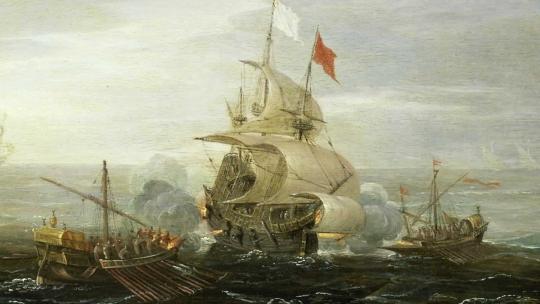




Dread pirates
The Barbary corsair pirates were predominantly Muslims who began operating in the 15th century out of Algiers, which was then part of the Ottoman empire.
Much of the western coastline of North Africa, from modern-day Morocco to Libya, was known as the "Barbary Coast" at the time — a name derived from the Berber people who lived there; and its pirates were a major threat for more than 200 years, preying on ships and conducting slave raids along the Mediterranean and Atlantic coasts of Europe.
The people captured in the slave raids were held for ransom or sold into the North African slave trade that operated in some Muslim countries until the early 20th century.
But the piratical activities of the Barbary corsairs came to an end in the early 19th century, when the pirates were defeated in the Barbary Wars by the United States, Sweden and the Norman Kingdom of Sicily in southern Italy.
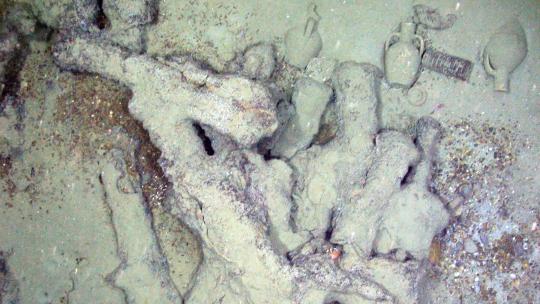
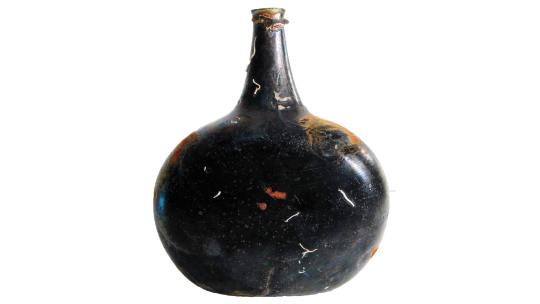
Sunken ship
The corsair wreck lies on the seafloor in the Strait of Gibraltar, at a depth of about 2,700 feet (830 meters).
The ship was about 45 feet (14 m) long, and research indicates it was a tartane — a small ship with triangular lateen sails on two masts that could also be propelled by oars.
Tartanes were used by Barbary pirates in the 17th and 18th centuries, in part because they were often mistaken for fishing vessels, meaning other ships wouldn't suspect pirates were onboard, Kingsley said.
"I've seen tartanes described as 'low-level pirate ships,' which I like,” Kingsley said.
The wreck hunters explored the sunken corsair using a remotely operated vehicle (ROV), which revealed the vessel was armed with four large cannons, 10 swivel guns and many muskets for its crew of about 20 pirates.
"The wreck neatly fits the profile of a Barbary corsair in location and character," Kingsley said. "The seas around the Straits of Gibraltar were the pirates' favorite hunting grounds, where a third of all corsair prizes were taken."
Stemm added that the wrecked ship was also equipped with a very rare "spyglass" — an early type of telescope that was revolutionary at the time and had probably been captured from a European ship.
Other artifacts of the wreck support the notion this was a pirate ship laden with stolen goods.
"Throw into the sunken mix a collection of glass liquor bottles made in Belgium or Germany, and tea bowls made in Ottoman Turkey, and the wreck looks highly suspicious," he said. "This was no normal North African coastal trader."
By Tom Metcalfe.
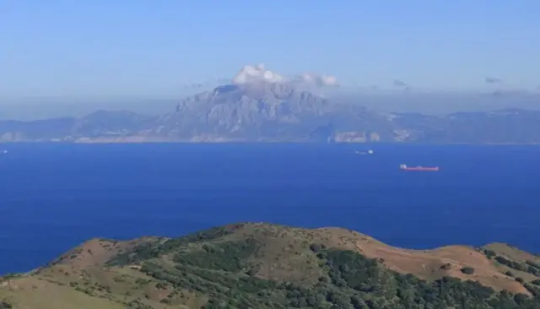
#17th-Century Pirate 'Corsair' Shipwreck Discovered off Morocco#Barbary corsair#pirate ship#shipwreck#Strait of Gibraltar#ancient artifacts#archeology#archeolgst#history#history news
42 notes
·
View notes
Text
Titan Sub Disaster: Key Takeaways from US Coast Guard Hearings
The US Coast Guard has held a week-long hearing into the Titan submersible tragedy, which resulted in the deaths of all five aboard during a deep-sea dive to the Titanic wreck. Investigators aim to determine the cause of the implosion and to prevent future similar incidents. Here are the key takeaways from the first week of hearings:

1. Crew's Final Words: "All Good Here"
The last message sent by the crew of the Titan submersible was a brief "All good here." The message was relayed roughly an hour into their descent to the Titanic wreck at 3,346 meters, after which communication was lost. Despite patchy communication, no immediate issues were reported before the tragedy.
2. Witness Recalls the Crew’s Final Moments
Renata Rojas, a mission specialist on the surface vessel, recalled the last moments with the crew as they smiled and prepared for their dive. She testified about the emotional shock of losing contact with the sub and described the mission as risky but not unsafe.
3. Whistleblower: Tragedy Was "Inevitable"
David Lochridge, a former operations director at OceanGate, revealed that he had raised safety concerns in 2018, years before the accident. He testified that OceanGate overlooked critical issues, such as the use of carbon fiber in the sub's construction, which he believed made the disaster inevitable.
4. New Footage of Titan Wreckage
Newly released footage from a remotely operated vehicle (ROV) shows the Titan submersible wreckage scattered on the ocean floor. The footage includes debris like wires, gauges, and parts of the vessel, providing a visual confirmation of the damage.
5. Leading Sub Manufacturer: Titan "Not Ready for Primetime"
Patrick Lahey, CEO of Triton, a leading submersible manufacturer, criticized Titan's design and safety measures. After touring the vessel, he expressed concern over its build quality, calling it "amateur-ish" and said it wasn’t sufficiently developed for such deep-sea missions.
The hearings continue as investigators work to provide recommendations and prevent future tragedies.
#TitanSubmersible#OceanGate#USCoastGuard#TitanicDive#SubmarineDisaster#SubmersibleSafety#Whistleblower#TitanWreckage
10 notes
·
View notes
Text
Coast Guard Marine Board of Investigation - ROV (remotely operated vehicle) footage from the Titan submersible incident salvage
07 ROV: Titan submersible’s aft dome, aft ring, hull remnants and carbon fiber debris on the seafloor
(from the USCG page)
7 notes
·
View notes
Note
I know I've said multiple times that I love your fics (especially Deep in the Dream and Curse and Cure) because they take advantage of the medium they are in (fanfiction). But, and especially after Hit Difference, I fully believe that you don't depend on the medium fanfiction to write good stories and you can totally write an original novel. I'll read it ^^
Is there anything you can tell us about it? I get it if it's too early for that but I am curious :D
Mona, I’ll cry!! 😭😭 I really needed to hear that right now as I get myself intimidated into trying my hand at something new. I’ve written novels before but I really feel like I’ve come into myself as a writer in this fandom and really found my stride and my voice.
It’s about a group of marine biologists on a deep sea misssion scouting an area before an oil company starts drilling there—and they find a clutch of eggs. And guess what’s in the eggs? 🧜🏼♀️
I’m in the early stages of planning now. I just named the characters and started poring over ships they’d likely take out and watching YouTube videos about ROV (remote operated vehicles— what they use down there because the pressure is too great for us). It’s all exciting and world building stuff before the final plot slots into place on my brain
12 notes
·
View notes
Text
This is the special interest I am adding to the Worb Au fic!
For everyone who wanted it to be a surprise, It's under the cut.
I will be linking this post (Or a similar one) (If I remember) When the fic comes out so you can come back and reference it.
Now, too the robots.
I fukin' LOVE ROV's. More specifically underwater ROV's.
ROV stands for: Remotely Operated Vehicles.

A company testing day. (It's an excuse to have fun with the ROV's and the ship [I can talk about the ship in a later post or in an ask if you want to ask some questions (See the bottom of the post)] for a day. And for Maxwell to flaunt his money to Wilson.)
The one in the drawing above is an observational class ROV that is built to survey depths of around 100ft. (I am estimating with the stats on the ones I had worked with/on) (They look similar)

Text:
Wilson: Wow!
Engineer: This is one of the many observational class ROV's you ordered.
Maxwell: Very good
Engineer: May I ask ab-
Maxwell: No.
This one in the drawing is one that is more up Maxwell's alley with the sleek style of more expensive ROV's that he would use for his oil rigs.
ROV's can be used to survey the ocean floor and rigs for damage. They can also be used to repair damages in piping and wiring.
-I am going to be slightly extubating the abilities of ROV's to a small extent for the purpose of the fic.-
If you want, please ask me questions about them. I will try to be able to answer questions. (I am NOT and expert on this topic. This is an interest of mine and I don't know everything.)
Closeups cause I love u all <3:


#worb au#worb#worbolous#maxwil#maxwell#maxwell carter#ds maxwell#maxwell ds#maxwell dst#dst maxwell#maxy#dst#ds#dst fanart#ds fanart#wilson#maxwell x wilson#wilson higgsbury#wilson ds#dst wilson#wilson dst#ds wilson#wilson percival higgsbury#wilson p. higgsbury#wilson p higgsbury#don't starve#dont starve#dont starve together#dontstarvetogether#don't starve fanart
14 notes
·
View notes
Text
youtube
Fresh from the Deep: Ocean scientists film elusive dreamer anglerfish
During a deep-sea expedition this fall, MBARI researchers happened upon the elusive dreamer anglerfish (Oneirodes sp.).
This fascinating fish was filmed with MBARI’s remotely operated vehicle (ROV) Ventana, 781 meters (2,562 feet) deep in Monterey Canyon. In 35 years of deep-sea exploration, MBARI’s ROVs have completed more than 7,300 successful dives and recorded more than 28,400 hours of video, yet we have only encountered the dreamer anglerfish nine times.
MBARI’s last observation of Oneirodes was in 2016.
This encounter marked MBARI’s first opportunity to film a deep-sea anglerfish in 4K. The unusual appearance of Oneirodes—ultra-black skin, a luminous lure, and sharp teeth—ensures survival in one of the most challenging environments on Earth.
Anglerfishes have bioluminescent lures to attract a meal. Their ultra-black skin absorbs the lure’s light concealing their giant mouth just beyond the lure. In fact, the dreamer anglerfishes are the blackest of black fishes known in the ocean. This “invisibility cloak” also keeps them hidden from predators.
The ROV Ventana recently completed its 4,500th research dive. This is the most science dives logged by a single ROV to date. The trove of deep-sea video filmed by the entire fleet of MBARI’s robots helps scientists document the diversity of life that dwells in the ocean’s depths and better understand humanity’s connection to the deep sea.
Read more: Fresh from the Deep:MBARI scientists film elusive dreamer anglerfish in 4K • MBARI
via: MBARI (Monterey Bay Aquarium Research Institute)
15 notes
·
View notes
Text
Meet Stellamedusa ventana 🪼
This softball sized, translucent jelly moves through the water like a shooting star. Wart-like bumps of stinging cells cover its feeding arms and bell.
This bumpy jelly is just one of more than 250 new species that MBARI researchers have found in the depths of Monterey Bay and beyond. Its genus, Stellamedusa, refers to the jelly’s translucent blue-white color and trailing arms, which reminded MBARI scientists of a slow-moving meteor or shooting star. Its species name, ventana, refers to MBARI’s remotely operated vehicle (ROV) Ventana, a deep-diving submarine robot that first recorded the jelly on video in 1990.
You can see Stellamedusa ventana for yourself @montereybayaquarium !
996 notes
·
View notes
Text
The garage-built jack-job sub and capital H Hubris
Y'all are going to get sick of me.
So, there's this post on OceanGate's site. Read it.
Now, from the top.
Come over here, you dumbfuck. Oh, forgot. You're on the ship, too, and most likely dead.
Lets look at this part first:
Most major marine operators require that chartered vessels are “classed” by an independent group such as the American Bureau of Shipping (ABS), DNV/GL, Lloyd’s Register, or one of the many others. These groups have assembled very detailed standards for classing everything from oil tankers to auxiliary ship equipment like Remotely Operated Vehicles (ROVs). Many of these standards are based on industry practice or covered by regulations such as reserve buoyancy, the number of life rafts, the types of materials that can be used on a hull, etc.
Classing assures ship owners, insurers, and regulators that vessels are designed, constructed and inspected to accepted standards.(1) Classing may be effective at filtering out unsatisfactory designers and builders, but the established standards do little to weed out subpar vessel operators – because classing agencies only focus on validating the physical vessel. They do not ensure that operators adhere to proper operating procedures and decision-making processes – two areas that are much more important for mitigating risks at sea. The vast majority of marine (and aviation) accidents are a result of operator error, not mechanical failure(2). As a result, simply focusing on classing the vessel does not address the operational risks. Maintaining high-level operational safety requires constant, committed effort and a focused corporate culture – two things that OceanGate takes very seriously and that are not assessed during classification.
*deep breath*
(1) Assuring regulators, buyers, and insurers that a vessel is fit for purpose means that a vessel is constructed in a manner generally accepted as safe.
(2) If you accept that the majority of marine and aviation accidents are operator error, then one can also argue that operators during those accidents are operating a vehicle recognized as safe in an unsafe manner.
Draw your own conclusions.
26 notes
·
View notes
Note
Apparently they found a debris field near the titanic so it’s not looking good
ya I saw the headline, haven't had a chance to skim the article yet.
body of that thing should be strong enough to handle another 500+ meters of depth so hopefully not them and they turn up a little wiser about going on submarine journeys
Nothing else it's a good lesson for anyone thinking about doing it
12 notes
·
View notes
Text
Aquatic Robot Market to Eyewitness Huge Growth by 2030
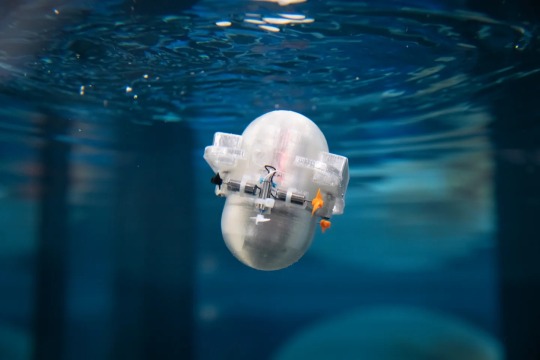
Latest business intelligence report released on Global Aquatic Robot Market, covers different industry elements and growth inclinations that helps in predicting market forecast. The report allows complete assessment of current and future scenario scaling top to bottom investigation about the market size, % share of key and emerging segment, major development, and technological advancements. Also, the statistical survey elaborates detailed commentary on changing market dynamics that includes market growth drivers, roadblocks and challenges, future opportunities, and influencing trends to better understand Aquatic Robot market outlook.
List of Key Players Profiled in the study includes market overview, business strategies, financials, Development activities, Market Share and SWOT analysis:
Atlas Maridan ApS. (Germany), Deep Ocean Engineering Inc. (United States), Bluefin Robotics Corporation (United States), ECA SA (France), International Submarine Engineering Ltd. (Canada), Inuktun Services Ltd. (Canada), Oceaneering International, Inc. (United States), Saab Seaeye (Sweden), Schilling Robotics, LLC (United States), Soil Machine Dynamics Ltd. (United Kingdom)
Download Free Sample PDF Brochure (Including Full TOC, Table & Figures) @ https://www.advancemarketanalytics.com/sample-report/177845-global-aquatic-robot-market
Brief Overview on Aquatic Robot:
Aquatic robots are those that can sail, submerge, or crawl through water. They can be controlled remotely or autonomously. These robots have been regularly utilized for seafloor exploration in recent years. This technology has shown to be advantageous because it gives enhanced data at a lower cost. Because underwater robots are meant to function in tough settings where divers' health and accessibility are jeopardized, continuous ocean surveillance is extended to them. Maritime safety, marine biology, and underwater archaeology all use aquatic robots. They also contribute significantly to the expansion of the offshore industry. Two important factors affecting the market growth are the increased usage of advanced robotics technology in the oil and gas industry, as well as increased spending in defense industries across various countries.
Key Market Trends:
Growth in AUV Segment
Opportunities:
Adoption of aquatic robots in military & defense
Increased investments in R&D activities
Market Growth Drivers:
Growth in adoption of automated technology in oil & gas industry
Rise in awareness of the availability of advanced imaging system
Challenges:
Required highly skilled professional for maintenance
Segmentation of the Global Aquatic Robot Market:
by Type (Remotely Operated Vehicle (ROV), Autonomous Underwater Vehicles (AUV)), Application (Defense & Security, Commercial Exploration, Scientific Research, Others)
Purchase this Report now by availing up to 10% Discount on various License Type along with free consultation. Limited period offer.
Share your budget and Get Exclusive Discount @: https://www.advancemarketanalytics.com/request-discount/177845-global-aquatic-robot-market
Geographically, the following regions together with the listed national/local markets are fully investigated:
• APAC (Japan, China, South Korea, Australia, India, and Rest of APAC; Rest of APAC is further segmented into Malaysia, Singapore, Indonesia, Thailand, New Zealand, Vietnam, and Sri Lanka)
• Europe (Germany, UK, France, Spain, Italy, Russia, Rest of Europe; Rest of Europe is further segmented into Belgium, Denmark, Austria, Norway, Sweden, The Netherlands, Poland, Czech Republic, Slovakia, Hungary, and Romania)
• North America (U.S., Canada, and Mexico)
• South America (Brazil, Chile, Argentina, Rest of South America)
• MEA (Saudi Arabia, UAE, South Africa)Furthermore, the years considered for the study are as follows:
Historical data – 2017-2022
The base year for estimation – 2022
Estimated Year – 2023
Forecast period** – 2023 to 2028 [** unless otherwise stated]
Browse Full in-depth TOC @: https://www.advancemarketanalytics.com/reports/177845-global-aquatic-robot-market
Summarized Extracts from TOC of Global Aquatic Robot Market Study Chapter 1: Exclusive Summary of the Aquatic Robot market
Chapter 2: Objective of Study and Research Scope the Aquatic Robot market
Chapter 3: Porters Five Forces, Supply/Value Chain, PESTEL analysis, Market Entropy, Patent/Trademark Analysis
Chapter 4: Market Segmentation by Type, End User and Region/Country 2016-2027
Chapter 5: Decision Framework
Chapter 6: Market Dynamics- Drivers, Trends and Challenges
Chapter 7: Competitive Landscape, Peer Group Analysis, BCG Matrix & Company Profile
Chapter 8: Appendix, Methodology and Data Source
Buy Full Copy Aquatic RobotMarket – 2021 Edition @ https://www.advancemarketanalytics.com/buy-now?format=1&report=177845
Contact US :
Craig Francis (PR & Marketing Manager)
AMA Research & Media LLP
Unit No. 429, Parsonage Road Edison, NJ
New Jersey USA – 08837
Phone: +1 201 565 3262, +44 161 818 8166
[email protected]
#Global Aquatic Robot Market#Aquatic Robot Market Demand#Aquatic Robot Market Trends#Aquatic Robot Market Analysis#Aquatic Robot Market Growth#Aquatic Robot Market Share#Aquatic Robot Market Forecast#Aquatic Robot Market Challenges
2 notes
·
View notes
Text
The Submersible Titan
OceanGate CEO Stockton Rush gives a tour of his submersible Titan.
He was one of five people that died on his own invulnerable submersible 'Titan'.
The submersible was carrying an expedition of tourists, including Hamish Harding, Paul-Henri Nargeolet, Shahzada Dawood, Dawood's son, Suleman, and the founder of OceanGate, Stockton Rush.
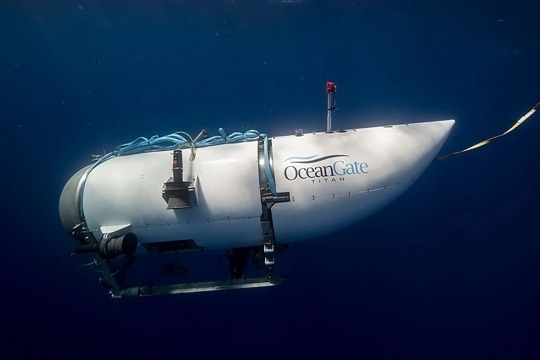


Debbie Field of Missing Submersible Titan Found Near Titanic
Debris has been found in the search for the missing Titan, including parts of its outside cover.
Dive expert David Mearns said the president of the Explorers Club - which is connected to the diving and rescue community - says the debris includes "a landing frame and a rear cover from the submersible".
The US Coast Guard earlier confirmed a "debris field" had been found within the search area.
It was located by a remote-controlled underwater search vehicle (ROV) near the wreck of the Titanic.
Some experts have speculated that it could have suffered a catastrophic implosion as a result of a hull failure. The minivan-sized submersible was owned and operated by the private company OceanGate Expeditions.
The firm's co-founder, Guillermo Söhnlein, said that he believes there may have been an "instantaneous implosion" of the craft.
"If that's what happened, that's what would have happened four days ago," he said.
#The Submersible Titan#Missing Submersible Titan Found Near Titanic#Titanic#Titan#OceanGate#submarine#submersible#titan submersible#stockton rush#shipwreck#implode#implosion#destroyed
126 notes
·
View notes